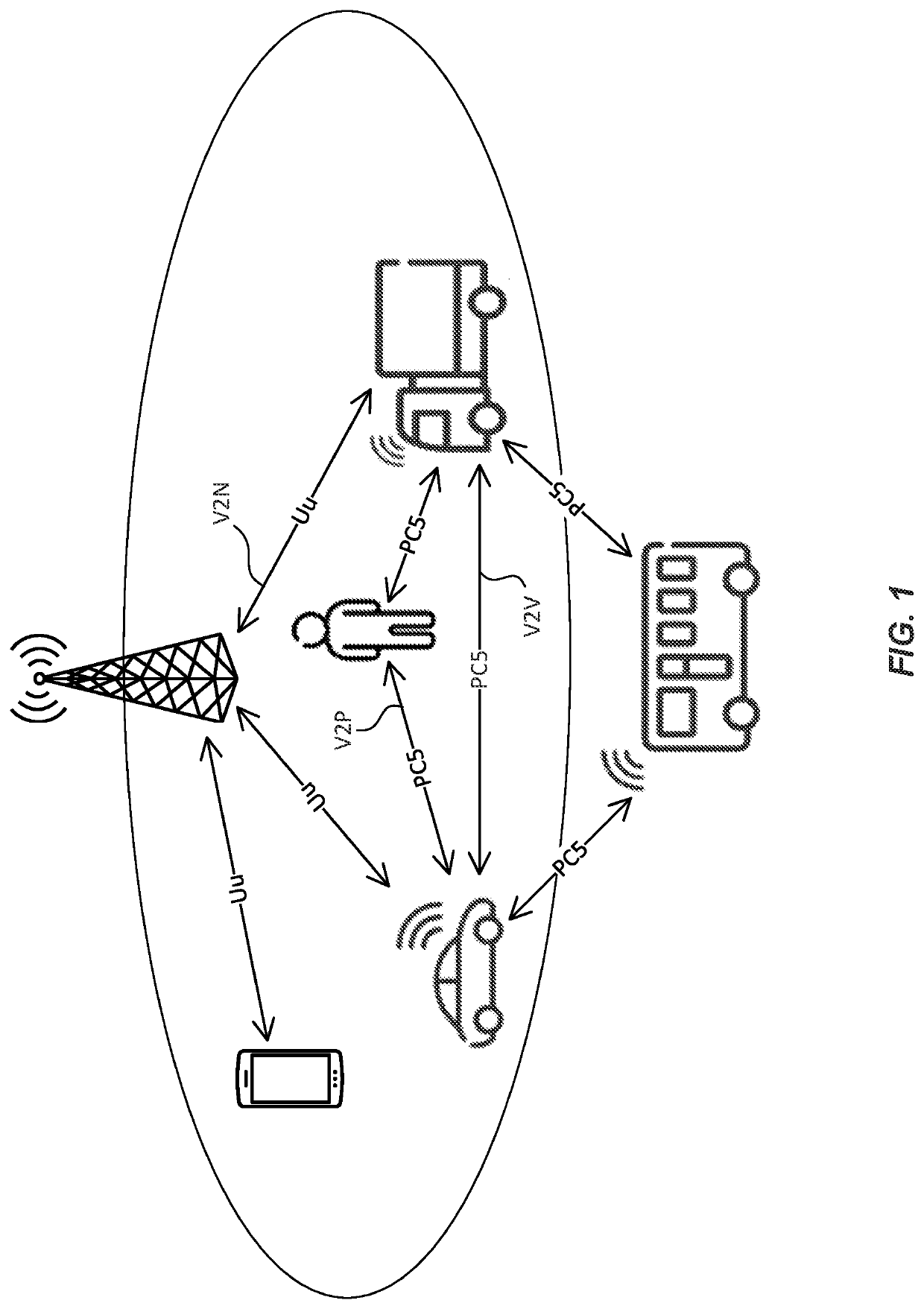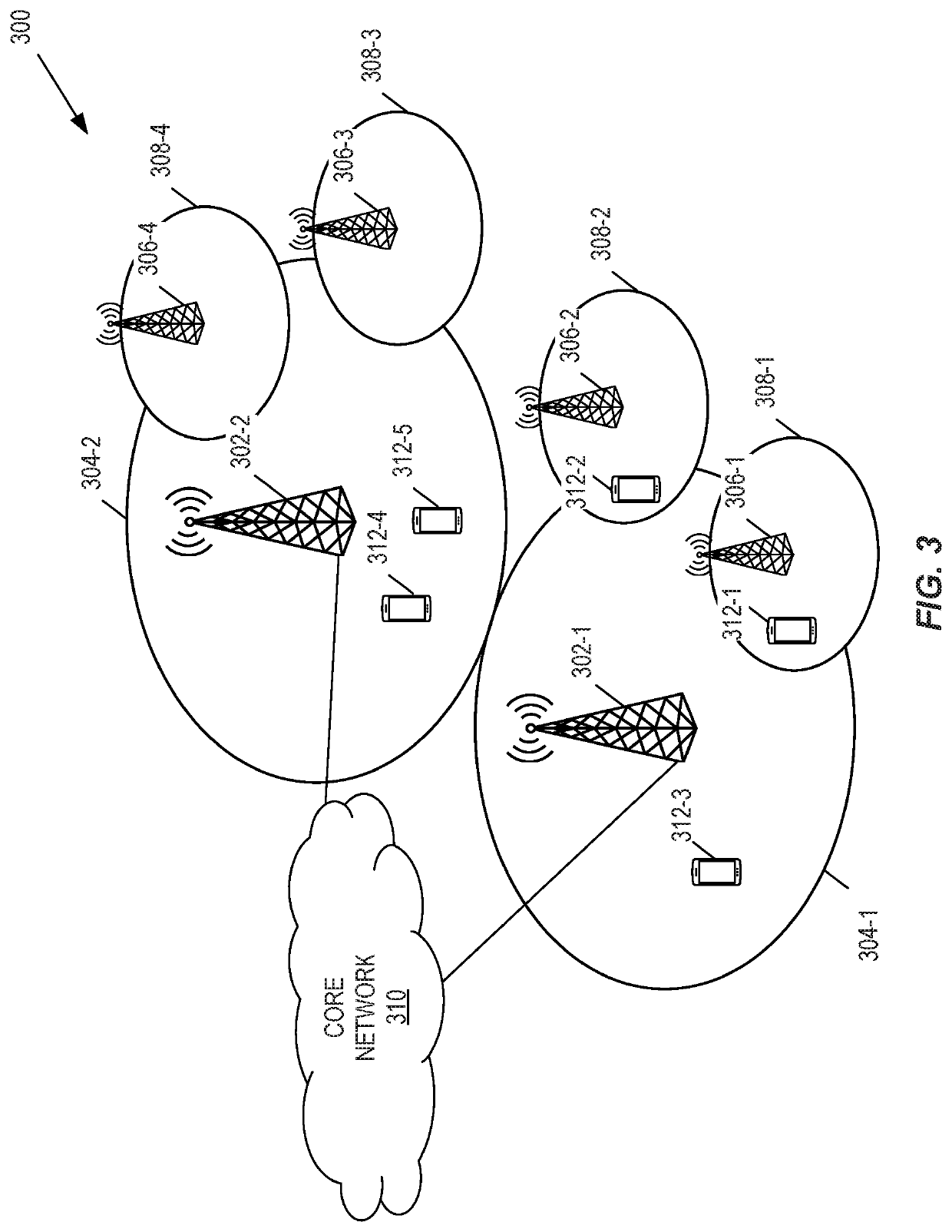Methods and systems for autonomous sidelink resource allocation
a resource allocation and sidelink technology, applied in the field of sidelink communication, can solve problems such as system instability, unsuitable for dynamic variation, and priority issues in distributed systems, and achieve the effect of high resource utilization and system efficiency
- Summary
- Abstract
- Description
- Claims
- Application Information
AI Technical Summary
Benefits of technology
Problems solved by technology
Method used
Image
Examples
embodiment 1
ource Reservation
[0145]FIGS. 6A, 6B, and 6C illustrate the steps of a process for autonomous sidelink resource allocation according to some embodiments of the present disclosure. In this embodiment, all steps are performed by the same UE, e.g., UE1. For this embodiment, the method is specialized as follows:[0146]Step 1: at time T1, the UE announces a first reservation of radio resources by transmitting a first control message. The reserved radio resources are for a transmission at time T3. This is shown in FIG. 6A.[0147]Step 2: at time T2, the UE sends a second reservation. This is shown in FIG. 6B. We distinguish the following cases:[0148]a) Confirm. The resources signaled in the second reservation coincide with the resources signaled in the first reservation. That is, the UE is confirming its initial reservation for the concerned time / frequency resources.[0149]b) Decrease. The resources signaled in the second reservation are a subset of the resources signaled in the first reservat...
embodiment 2
[0154]FIGS. 7A, 7B, 7C, and 7D illustrate the steps of a process for autonomous sidelink resource allocation according to some embodiments of the present disclosure. In this embodiment, not all of the steps are performed by just one UE: instead, some of the steps are performed by a first UE (UE1) and the remaining steps are performed by another UE (UE2).
[0155]For this embodiment, the method is specialized as follows:[0156]Step 1: at time T1, UE1 announces a first reservation of radio resources by transmitting a first control message. This is shown in FIG. 7A. The reserved radio resources are for a transmission at time T3.[0157]At time T1+d, UE1 sends another control message to cancel the first reservation. That is, UE1 is notifying the other UEs that UE1 will not make use of the reserved resources. This is shown in FIG. 7B.[0158]Step 2: at time T2, UE2 transmits its control message to either update its already reserved resources or make a new reservation. This is shown in FIG. 7C.[0...
embodiment 3
[0161]FIGS. 8A, 8B, and 8C illustrate the steps of a process for autonomous sidelink resource allocation according to some embodiments of the present disclosure. In this embodiment, Step 1 is performed by UE1 and Steps 2 and 3 are performed by UE2.
[0162]For this embodiment, the method is specialized as follows:[0163]Step 1: at time T1, UE1 announces a first reservation of radio resources by transmitting a first control message. The reserved radio resources are for a transmission at time T3. This is shown in FIG. 8A.[0164]Step 2: at time T2, UE2 sends a second control message (i.e., second reservation) overriding the first reservation by UE1. That is, UE2 is notifying UE1 that its reservation of resources has been cancelled (i.e., UE1 has been preempted). The resources contained in the second reservation may be the same as in the first reservation, or a subset / superset of the resources in the first reservation.[0165]Step 3: at time T3, UE2 transmits a first data message using the rad...
PUM
 Login to View More
Login to View More Abstract
Description
Claims
Application Information
 Login to View More
Login to View More - R&D
- Intellectual Property
- Life Sciences
- Materials
- Tech Scout
- Unparalleled Data Quality
- Higher Quality Content
- 60% Fewer Hallucinations
Browse by: Latest US Patents, China's latest patents, Technical Efficacy Thesaurus, Application Domain, Technology Topic, Popular Technical Reports.
© 2025 PatSnap. All rights reserved.Legal|Privacy policy|Modern Slavery Act Transparency Statement|Sitemap|About US| Contact US: help@patsnap.com



